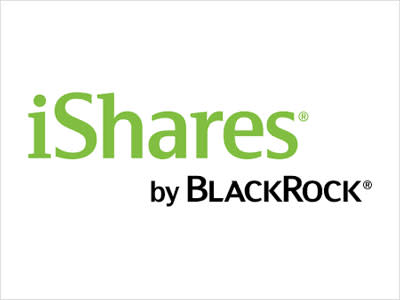BlackRock, a pioneer in index investing, has a great record of managing index funds
This fund provides access to a range of overseas government bonds
It’s a simple, low-cost way to track the J.P. Morgan Global Government Bond Index ex UK
This fund doesn’t feature on our Wealth Shortlist of funds chosen by our analysts for their long-term performance potential
How it fits in a portfolio
The iShares Overseas Government Bond Index fund invests in bonds issued by governments of developed countries, excluding the UK. These bonds are typically viewed as lower risk, because it’s unlikely a developed country’s government would default on its bonds, though it’s not guaranteed. Because of this, the income paid by government bonds tends to be lower than corporate bonds.
An index tracker fund is one of the simplest ways to invest, and this fund could be a low-cost starting point for an investment portfolio aiming to provide a combination of income and growth. It could be a good addition to a more conservative portfolio or could diversify one that is focused on shares or corporate bonds.
While we view the fund as a useful way to gain passive exposure to overseas government bonds, it’s not on the Wealth Shortlist as it already features funds that offer exposure to this part of the market and are run by managers we rate highly.
Manager
The team that manages this fund is led by John Hutson. Hutson has been at BlackRock for 14 years and has 24 years of experience in total. While Hutson leads the team, each index fund at BlackRock has a primary and secondary manager, though in practice the broader team helps to manage each fund.
Francis Rayner is the Head of Rates at BlackRock and the primary manager of this fund. Rayner joined Barclays Global Investors in 2008 which merged with BlackRock in 2009. The secondary manager is Samia Zhaibet. She joined BlackRock’s graduate scheme in 2018 and worked her way up to become a fund manager.
BlackRock also has other teams that trade shares and bonds based across the world. The teams function in different time zones, which means they have access to timely information, and can provide input on market trends and corporate actions. Their global approach helps drive efficient management of their funds, while providing simple and effective tracking options for investors.
Process
This fund aims to track the performance of the J.P. Morgan Global Government Bond Index ex UK. It invests in almost every bond in the index. This is known as partial replication, which could help the fund track the index closely without incurring the cost of holding every bond.
The fund is currently made up of 975 government bonds with varying maturities. It invests in bonds issued by governments in 12 developed countries, excluding the UK. Just over half of the fund is invested in the US, followed by Japan and France at 17.30% and 6.98% respectively. The fund may invest more than 35% in bonds issued by a single government, which can increase concentration risk.
The team uses currency hedging which means overseas currency bonds are converted back to sterling. The prices and income of global bonds can go up and down with foreign currency movements, adding volatility for UK investors. By hedging, investors could experience less extreme price movements over time, which could help smooth potential returns. Although, currency hedging can be expensive and is done through derivatives which adds risk.
The fund can lend some of its investments to others in exchange for a fee in a process known as stock lending. This offsets some of the costs involved with running the fund. Since BlackRock’s lending program started in 1981, only three borrowers with active loans have defaulted. In each case, BlackRock was able to repurchase every security out on loan with collateral on hand and without any losses to their clients. Even so, stock lending adds risk.
Culture
BlackRock is currently the largest asset manager in the world, running around $11.6trn of assets globally as of March 2025. The company was founded by eight partners including current CEO Larry Fink and is known for both active and passive strategies. Employees at BlackRock are encouraged to hold shares in the company so that they are engaged with helping the company perform well and grow. The iShares brand represents BlackRock's family of index tracking and exchange-traded funds.
As the world's largest asset manager, and with lots of resource and knowledge under its belt, BlackRock benefits from unique access to the marketplace, which can help reduce trading costs. BlackRock is also a pioneer in the passive investment space and has a track record of innovation in this part of the investment market.
The team running this fund also works closely with various fixed income and risk departments across the business. We believe this adds good support and challenge on how to run the fund effectively.
ESG Integration
BlackRock was an early signatory to the Principles for Responsible Investment (PRI) and has offered Environmental, Social and Governance (ESG)-focused funds for several years, including through its iShares range of passive products. But it only made a company-wide commitment to ESG in January 2020. Following that announcement, the company promised to expand its range of ESG-focused ETFs, screen some thermal coal companies out from its actively managed funds and require all fund managers to consider ESG risks.
BlackRock’s Investment Stewardship Team aims to vote at 100% of meetings where it has the authority to do so. The Investment Stewardship team engages with companies, in conjunction with fund managers, and the results of proxy votes can be found on the BlackRock website’s ‘proxy voting search’ function.
BlackRock has courted controversy in recent years for failing to put its significant weight behind shareholder resolutions aimed at tackling climate change. It responded by committing to be more transparent on its voting activity and providing rationales for key votes.
BlackRock raised further concerns in 2022 when it indicated it might support fewer shareholder proposals based on environmental and social issues in the future. But its support for shareholder resolutions has fallen dramatically, from 40% in 2021 to just 4% in 2024. BlackRock argues that many of the resolutions were overreaching, lacked economic merit or didn’t promote long-term shareholder value, but this reasoning has been met with some scepticism.
In 2024, BlackRock announced that its US arm would step back from the Climate Action 100+ collective engagement initiative, citing legal considerations, although it suggested its international arm would remain a member.
iShares Overseas Government Bond Index is a passive fund designed to track an index that doesn’t specifically integrate ESG analysis or exclude bonds issued by companies in certain industries like tobacco or weapons.
Cost
The fund has an ongoing annual fund charge of 0.13%. Our platform charge of up to 0.45% per annum also applies, except in the HL Junior ISA, where no platform charge applies.
Performance
The iShares Overseas Government Bond Index fund has tracked its benchmark closely since it launched in January 2011. As expected of index funds, it’s fallen behind the benchmark over the long term because of the costs involved in running the fund. However, the management tools used by the team have helped to keep performance tight to the index.
This sterling hedged shareclass launched in August 2023 and has returned 6.53%* during that time. Over the past 12 months, it’s gained 4.85%. Remember, past performance isn’t a guide to the future.
Bond yields move in the opposite direction to prices. Usually, when interest rates are cut, bond yields fall, and prices rise. But in the first half of 2024, yields fell in anticipation of rate cuts and then rose when cuts didn’t come.
The European Central Bank was among the first to lower interest rates in June 2024. This was followed by the US Federal Reserve who cut rates in September for the first time in four years and with a bigger cut compared to most other major central banks.
Even though central banks continued to lower rates, bond yields increased from September, and prices fell. This was driven by the expectation of Trump winning the US election, followed by the view that his policies, especially on tariffs, have the potential to push inflation higher. Bond markets moved as a result to expect fewer interest rate cuts.
So far this year, bond markets have been volatile due to the unknown impact of Trump’s tariffs and inflation remaining above target. Interest rate cuts are still expected but most central banks are taking a gradual approach.
The yield for the iShares Overseas Government Bond Index fund was 3.31% as of the end of May 2025. Yields aren’t guaranteed and shouldn’t be considered a reliable indicator of future income.
Given BlackRock's size, experience and expertise running index tracker funds, we expect the fund to continue to track the index well in future, though there are no guarantees.
Annual percentage growth
May 20 – May 21 | May 21 – May 22 | May 22 – May 23 | May 23 – May 24 | May 24 – May 25 | |
|---|---|---|---|---|---|
iShares Overseas Government Bond Index | N/A**% | N/A**% | N/A**% | N/A**% | 4.85% |
N/A** = performance data for this period is not available due to when the shareclass was launched.


